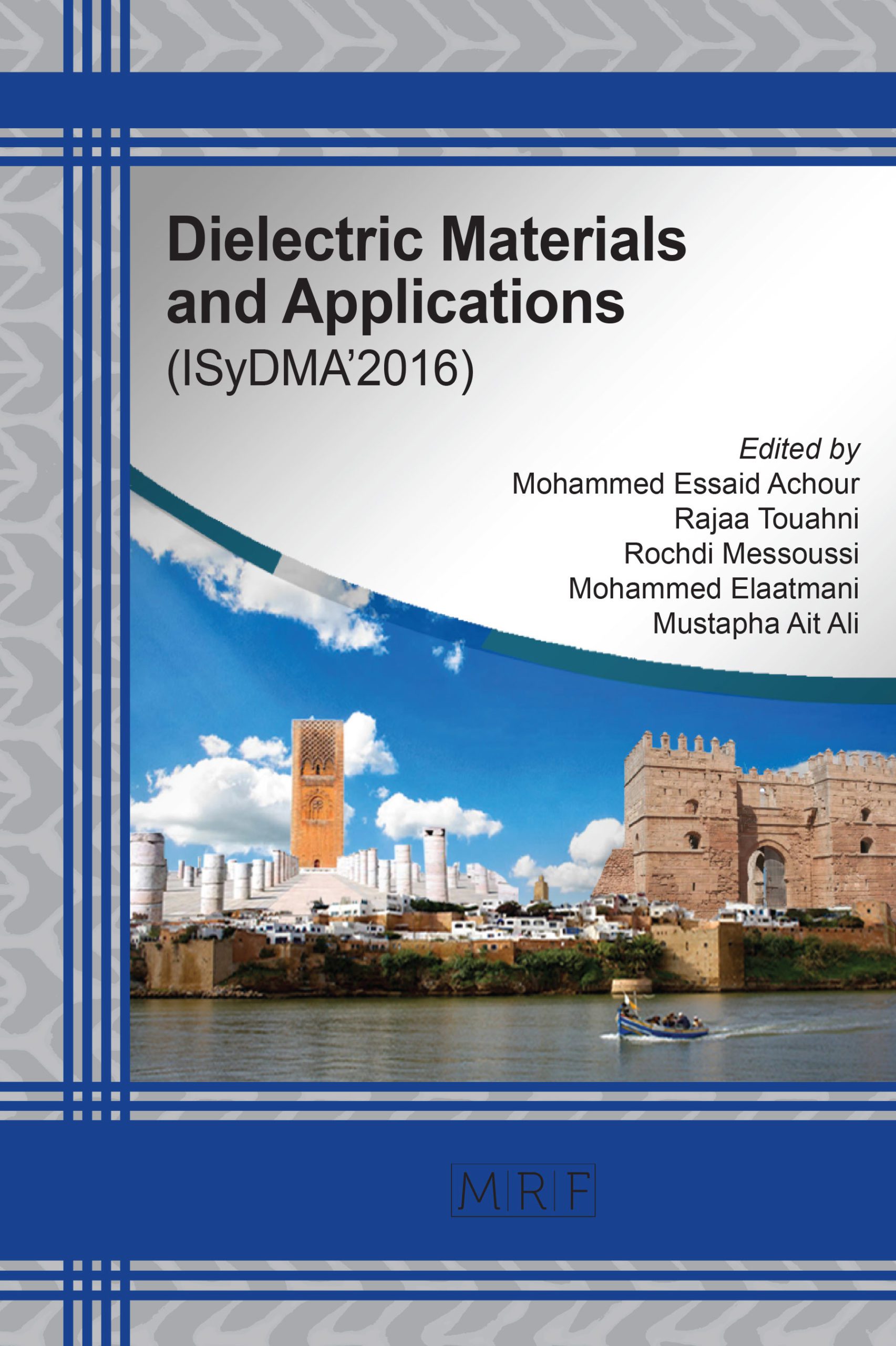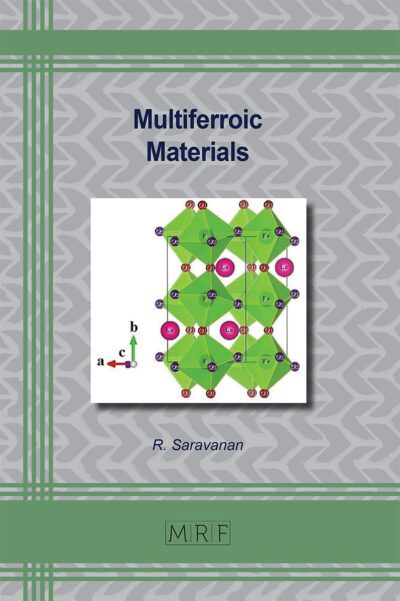Z. SAMIR, Y. EL MERABET, M. P. F.GRAÇA, S. SORETO TEIXEIRA, M. E. ACHOUR, L. C. COSTA
Abstract. The dielectric relaxation characteristics of different concentrations of carbon nanotubes loaded in polyester polymer matrix has been studied as a function of frequency over a wide range (100 Hz–106Hz). The effect of filler loading and frequency dependence on the real and imaginary parts of the impedance was explained by the relaxation process. Spectral curve of impedance was fitted using the Cole-Cole dielectric relaxation function. The calculated relaxation parameters of this model and the distribution function of relaxation times are calculated and presented.
Keywords
Carbon Nanotubes, Electrical Conductivity, Cole-Cole
Published online 12/10/2016, 4 pages
Copyright © 2016 by the author(s)
Published under license by Materials Research Forum LLC., Millersville PA, USA
Citation: Z. SAMIR, Y. EL MERABET, M. P. F.GRAÇA, S. SORETO TEIXEIRA, M. E. ACHOUR, L. C. COSTA, ‘Complex impedance study of carbon nanotubes/polyester polymer composites’, Materials Research Proceedings, Vol. 1, pp 13-16, 2016
DOI: http://dx.doi.org/10.21741/9781945291197-4
The article was published as article 4 of the book Dielectric Materials and Applications
References
[1] K. Zhang, Davis M, Qiu JJ, Hope-Weeks L, Wang SR. Nanotechnology 2012:23.
[2] GT . Pham, YB. Park, SR . Wang, ZY. Liang, B. Wang, C. Zhang, et al. Nanotechnology2008:19.
[3] K. Zhang, SR. Wang. Carbon 2014;69:46. http://dx.doi.org/10.1016/j.carbon.2013.11.055
[4] K. Zhang, Y. Zhang, SR. Wang. Carbon 2013;65:105. http://dx.doi.org/10.1016/j.carbon.2013.08.005
[5] Li, Wang SR, D. Hui, JJ. Qiu. Compos Part B Engineering 2015;71:40.S. Iijima, Nature 354 (1991) 56.
[6] J.-M. Thomassin, I. Huynen, R. Jerome, C. Detrembleur, Polymer 51 (2010) 115. http://dx.doi.org/10.1016/j.polymer.2009.11.012
[7] G. Stauffer, Introduction to the Percolation Theory, Taylor and Francis, London, 1985. http://dx.doi.org/10.4324/9780203211595
[8] D. Carponcin, E. Dantras, G. Aridon, F. Levallois, L. Cadiergues, C. Lacabanne, Compos. Sci. Technol. 72 (2012) 515. http://dx.doi.org/10.1016/j.compscitech.2011.12.012
[9] Balberg, C.H. Anderson, S. Alexander, N. Wagner, Phys. Rev. B 30 (1984) 3933. http://dx.doi.org/10.1103/PhysRevB.30.3933
[10] K.S. Cole, R.H. Cole, J. Chem. Phys. 9 (1941) 341. http://dx.doi.org/10.1063/1.1750906
[11] H.H.S. Javadi, F. Zuo, K.R. Cromack, M. Angelopoulos, A.G. Mac, J. Epstein Synth. 279 Met. 29 (1989) 409–416. 280. http://dx.doi.org/10.1016/0379-6779(89)90326-3
[12] F. Zuo,M. Angelopolous, A.G.Mac, J. Epstein Phys. Rev. B 39 (1989) 3570–3578. 281. http://dx.doi.org/10.1103/PhysRevB.39.3570
[13] A.N. Papathanassiou, J. Grammatikakis, S. Sakkopoulos, E. Vitoratos, E. Dalas, J. 282 Phys. Chem. Solids 63 (2002) 1771–1778. 283. http://dx.doi.org/10.1016/S0022-3697(01)00264-5
[14] S. Banerjee, A. Kumar, J. Non-Cryst. Solids 358 (2012) 2990–2998. http://dx.doi.org/10.1016/j.jnoncrysol.2012.07.033
[15] A.K. Jonscher, Dielectric Relaxation in Solids, Chelsea Dielectric Press, London, 1983. p. 98.
[16] L.C. Costa, M.E. Achour, M.P.F. Grac¸a, M. El Hasnaoui, A. Outzourhit, and A. Oueriagli, Non-Cryst. Solids., 356, 270 (2010). http://dx.doi.org/10.1016/j.jnoncrysol.2009.11.008
































